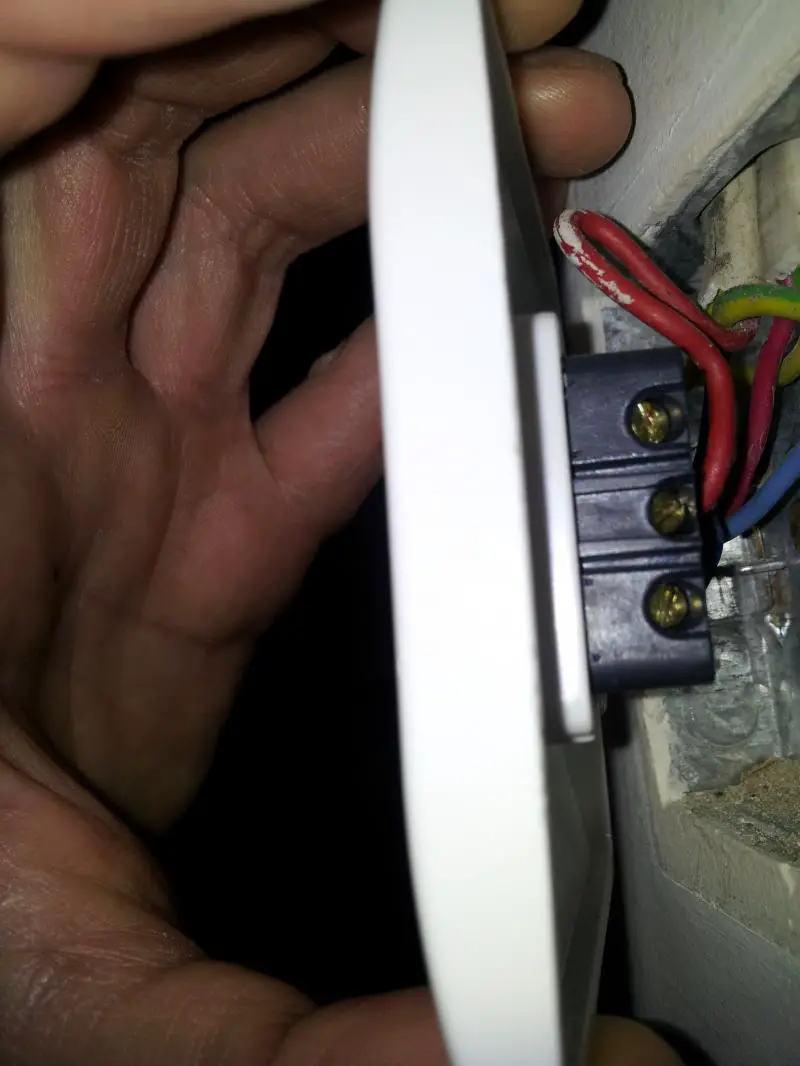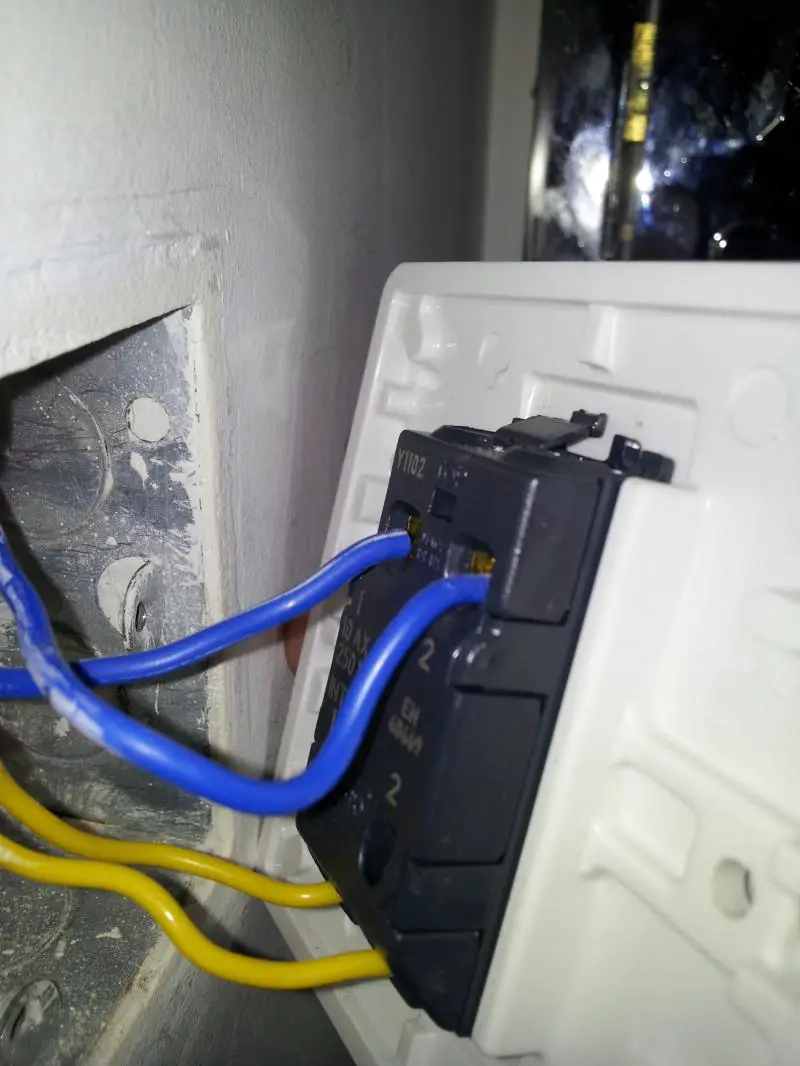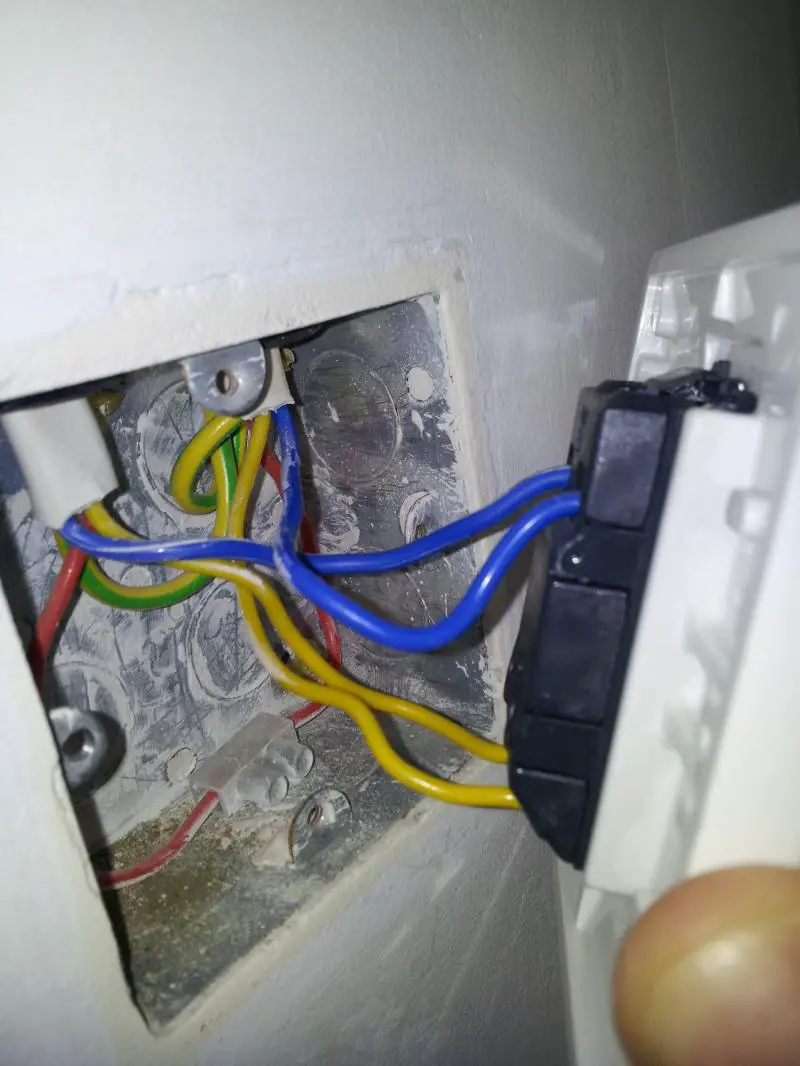Hi all
I've wired some switches and sockets in the past but am far from being a professional... was hoping for some advice!
I recently bought a house and the hallway lights are wired up to 3 light switches - one by the front door, one at the end of the hallway and one on the upstairs landing.
But I'm seeing some wierd behavior: the hallway and upstairs switches will toggle the lights on-and-off between them, but when the doorway switch is flipped downwards it overrides the other 2 switches completely, supplying power to the lights regardless of what you do to the doorway or upstairs switches. When it's flipped back upwards it hands control back to the upstairs and hallway switches again (which means that if they're in a configuration where they're providing power to the lights then flipping the doorway switch just causes a brief flicker as it switches from power to power).
I was assuming they were meant to be wired up as 3 way switches so you could toggle the lights from the doorway, the hall or upstairs and that maybe someone botched up the wiring somehow, so I've unscrewed the switches and taken a look at the wiring.
I was expecting to find something like this:

...but with some obvious mistake that I could quickly rectify.
But what I found has me completely stumped! I'm seeing wiring almost identical to the above - with the doorway switch being the intermediate switch - but neither of the other 2 switches has the "circuit cable" coming into it. ie. both the upstairs and the hallway switch wiring looks identical to the bottom switch in the diagram and the intermediate switch is wired exactly as in the diagram.
Also, it seems the previous owner took down the light fitting which they had in the hallway and replaced it with a "normal" bulb holder like this: http://www.screwfix.com/p/mk-loop-in-batten-lampholder/96320 - so I'm wondering if they somehow screwed up the wiring when they did it?
I'm assuming that my only option is to open-up the light fitting and take a look... but I've put that on hold as I ran out of "tinkering time" for today.
Could anyone venture an opinion on what's going on with my wiring? I can't imagine the intention was to have some strange override-switch at the front door but maybe it's no unheard of?
Any opinions would be greatfully received!
I've wired some switches and sockets in the past but am far from being a professional... was hoping for some advice!
I recently bought a house and the hallway lights are wired up to 3 light switches - one by the front door, one at the end of the hallway and one on the upstairs landing.
But I'm seeing some wierd behavior: the hallway and upstairs switches will toggle the lights on-and-off between them, but when the doorway switch is flipped downwards it overrides the other 2 switches completely, supplying power to the lights regardless of what you do to the doorway or upstairs switches. When it's flipped back upwards it hands control back to the upstairs and hallway switches again (which means that if they're in a configuration where they're providing power to the lights then flipping the doorway switch just causes a brief flicker as it switches from power to power).
I was assuming they were meant to be wired up as 3 way switches so you could toggle the lights from the doorway, the hall or upstairs and that maybe someone botched up the wiring somehow, so I've unscrewed the switches and taken a look at the wiring.
I was expecting to find something like this:

...but with some obvious mistake that I could quickly rectify.
But what I found has me completely stumped! I'm seeing wiring almost identical to the above - with the doorway switch being the intermediate switch - but neither of the other 2 switches has the "circuit cable" coming into it. ie. both the upstairs and the hallway switch wiring looks identical to the bottom switch in the diagram and the intermediate switch is wired exactly as in the diagram.
Also, it seems the previous owner took down the light fitting which they had in the hallway and replaced it with a "normal" bulb holder like this: http://www.screwfix.com/p/mk-loop-in-batten-lampholder/96320 - so I'm wondering if they somehow screwed up the wiring when they did it?
I'm assuming that my only option is to open-up the light fitting and take a look... but I've put that on hold as I ran out of "tinkering time" for today.
Could anyone venture an opinion on what's going on with my wiring? I can't imagine the intention was to have some strange override-switch at the front door but maybe it's no unheard of?
Any opinions would be greatfully received!




